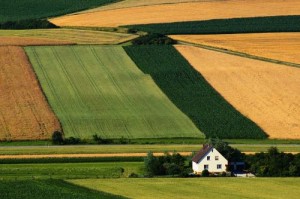Rotating the types and location of crops can have significant benefits to your soil and crops. It takes some time and planning to create an effective crop rotation strategy, but once implemented there is the potential for yield increases and an overall healthier farm environment. It is important to consider all qualities of the crops being planted to best determine the most effective rotation. Crop family, herbicide and other chemical use, nutrient needs, and root type are a few examples of the crop qualities that need to be evaluated when creating a crop rotation plan.
Benefits
If crop rotation is continued for several years it is likely that there will be a noticeable improvement in yields. All of the following benefits add up over time and will create a better growing environment for each of the crops being planted.
Erosion Benefits
Different crops have different amounts of residues so using crop rotation with no-till planting methods helps balance these differences keeping all fields erosion resistant.
Nutrient Benefits
Different families of crops including, greens, legumes, squash/corn, and tomato/potato all bring different nutrients to the soil as well as have different nutrient requirements. By rotating these crops between fields it helps prevent the build-up or loss of certain nutrients in the soil. This can in turn reduce the need for fertilizer.
Soil Benefits
Different rooting systems among plants can also create all around better soil structure.
Insect Benefits
Different crops also bring different biota benefits and problems to the fields they are planted in. By rotating crops it breaks the cycle of food for harmful insects as well as helps beneficial microorganisms grow in all fields.
Disease Benefits
Disease transmission can be controlled by crop rotation because different crops will be affected differently by the disease and changing environmental conditions will change how the disease is able to spread.
Programs
USDA NRCS
USDA NRCS administers a variety of cost share programs to implement conservation practices such as crop rotation. The Conewago is USDA’s “Showcase Watershed” meaning the watershed is targeted for resources and funding.
319 Funding
Priority areas of the watershed can be funded to implement agricultural Best Management Practices through the County Conservation Districts’ 319 funding.
Interested in implementing this practice?
Contact
Heather Grove, USDA NRCS
(717) 874-2530, heather.grove@pa.usda.gov
Eric Naguski, DCCD
(717) 921-8100, enaguski@dauphinc.org
Web Resources
Cover Crop Selection and Management
A printable version of this information-
Crop Rotation Factsheet

